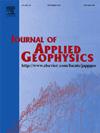巴西东南部里约热内卢州b里约热内卢新元古代黑格岩浆弧花岗岩-片麻岩杂岩岩心的岩石物理测井响应
IF 2.1
3区 地球科学
Q2 GEOSCIENCES, MULTIDISCIPLINARY
引用次数: 0
摘要
在许多勘探项目中,由于钻井、回收和储存的高成本,钻孔岩心并不总是被回收。在某些情况下,岩心回收的好处超过了成本和局限性,而在其他情况下,使用替代方法获得有关钻孔的相关信息可能更有利。这项研究展示了里约热内卢Negro岩浆弧的垂直岩石序列,由于钻探岩心很少,而且垂直露头的地区很难进入,因此通常不会看到这些岩石。本研究的目的是将UFRJ-01-RJ井中测量的岩石物理数据与钻芯中观察到的地质特征相关联,以产生可应用于其他井的电相。在这项工作中,使用光学和声学电视以及体积密度,伽马射线和卡尺进行电缆测井。UFRJ-01-RJ井的岩石属于里约热内卢Negro杂岩,返回39.6 m的正长石序列,与花岗岩和伟晶岩互层。根据颜色、粒度、纹理和裂缝的差异,在岩心中识别出6种主要的岩型。卡尺剖面显示几乎没有变化,因为片麻岩几乎没有改变。体积密度在整个井眼中只有轻微波动,平均为2.62 g/cm3。事实证明,光学观测器在观察叶理的颜色、粒度和方向差异方面非常有用,而声波观测器则可以识别岩石的裂缝带和结构差异。UFRJ-01-RJ井大部分岩石的体积密度与自然伽马值成反比。这是由于岩石的不同矿物学,在基性部分(密度较高,钾含量较低)和富含钾长石的长英质部分(密度较低,钾含量较高)之间交替存在。通过对光学和声学电视所获得的不同电相模式的分析,可以绘制出所描述的主要岩性的相表。这些图像特征与伽马射线和体积密度剖面相结合,证明对识别岩性具有很高的价值。因此,本文所使用的地球物理工具可以弥补许多地质研究中缺少钻孔岩芯的不足,即使是在应用于不常用地球物理方法研究的岩性时也是如此。本文章由计算机程序翻译,如有差异,请以英文原文为准。
Petrophysical log responses of a core-drilled from the granite-gneiss complex of the Rio Negro Magmatic Arc (Neoproterozoic of Rio de Janeiro State, Southeastern Brazil)
In many exploration projects, drill cores are not always recovered due to the high costs involved in drilling, recovering and storage. In some cases, the benefits of core recovery outweigh the costs and limitations, while in others it may be more advantageous to use alternative methods to obtain relevant information about the drilled hole. This study presents a vertical succession of rocks from the Rio Negro Magmatic Arc that are not normally seen because drill cores are rare and areas with vertical outcrops are difficult to access. The aim of this study is to correlate the petrophysical data measured in the UFRJ-01-RJ borehole with the geological features observed in the drill core in order to generate electrical facies that can be applied to other boreholes. In this work, wireline logging was carried out using optical and acoustic televiewers as well as bulk density, gamma ray and caliper. The rocks from borehole UFRJ-01-RJ belong to the Rio Negro Complex and returned 39.6 m of a sequence of orthogneisses interbedded with granites and pegmatites. Six main lithotypes were identified in the profiles based on differences in color, grain size, texture and fracture, which were easily recognizable in the core. The caliper profile shows practically no variations, as the gneisses are little altered. The bulk density showed only slight fluctuations throughout the borehole recording an average value of 2.62 g/cm3. The optical televiewer proved to be very useful for observing differences in color, grain size and orientation of the foliation, while the acoustic televiewer identified fracture zones and textural differences in the rocks. The bulk density and natural gamma ray values were found to be inversely proportional for most of the rocks in borehole UFRJ-01-RJ. This is due to the different mineralogy of the rocks, which alternate between mafic portions (with higher density and lower potassium content) and felsic portions rich in K-feldspar (with lower density and higher potassium content). The analysis of the different electrical facies patterns obtained with optical and acoustic televiewers made it possible to draw up a facies table of the main lithotypes described. These image features, in combination with gamma ray and bulk density profiles, proved to be of high value in identifying the lithotypes. Therefore, the geophysical tools used herein can equalize the lack of drill cores in many geological studies even for when applied for lithologies not commonly studied by geophysical methods.
求助全文
通过发布文献求助,成功后即可免费获取论文全文。
去求助
来源期刊

Journal of Applied Geophysics
地学-地球科学综合
CiteScore
3.60
自引率
10.00%
发文量
274
审稿时长
4 months
期刊介绍:
The Journal of Applied Geophysics with its key objective of responding to pertinent and timely needs, places particular emphasis on methodological developments and innovative applications of geophysical techniques for addressing environmental, engineering, and hydrological problems. Related topical research in exploration geophysics and in soil and rock physics is also covered by the Journal of Applied Geophysics.
 求助内容:
求助内容: 应助结果提醒方式:
应助结果提醒方式:


